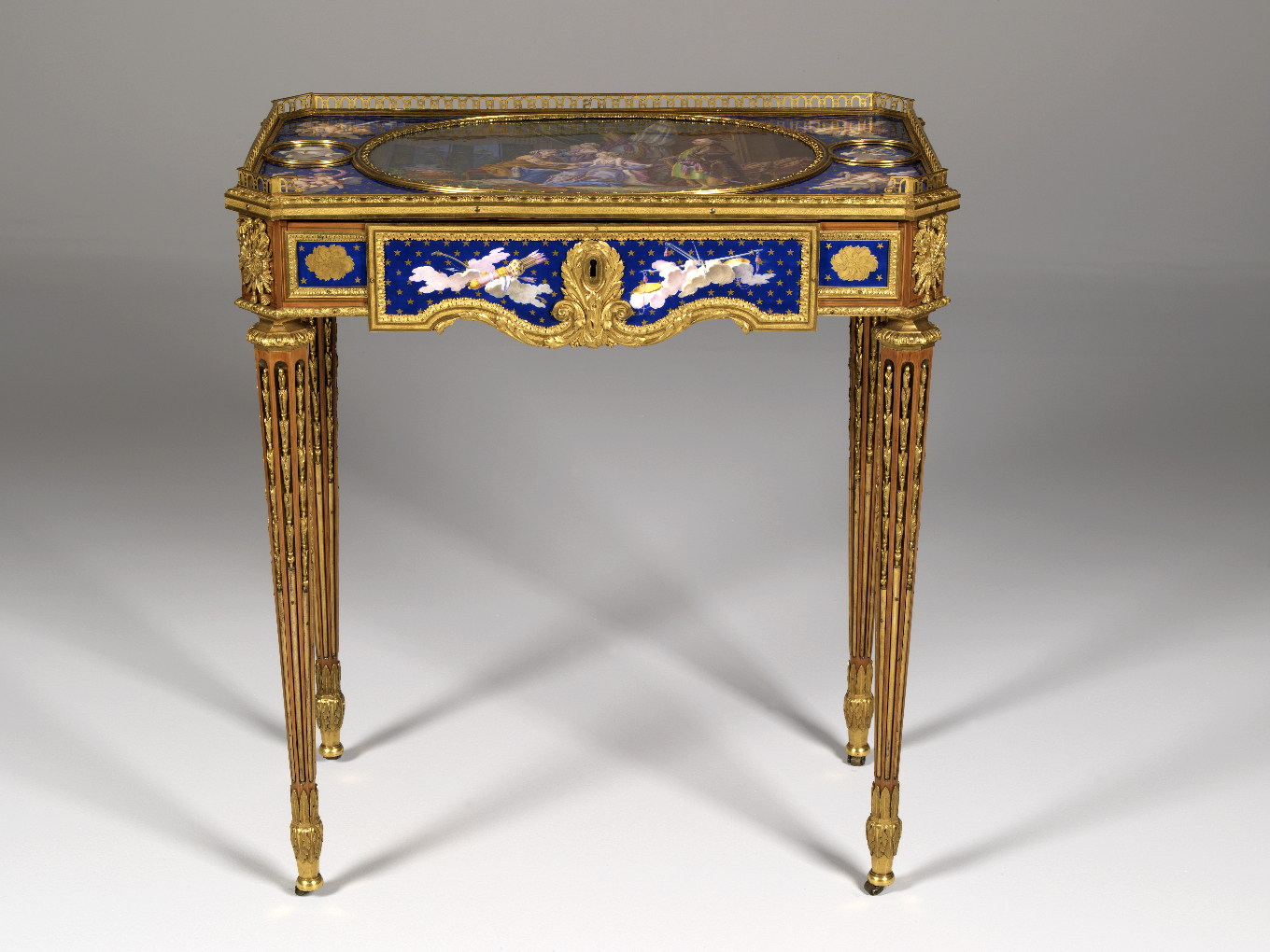
- Paris, c. 1772
- Oak, sycamore, bloodwood, ebony and boxwood; brass; Sèvres porcelain plaques; chased and gilded bronze pieces; velvet
- Inv. 2267
Writing table
With a rectangular top and cut-off corners, this rectilinear table, created in the style of Louis XVI, also features counter-curved surfaces on the four corners of the table top, emphasized by chased and gilded bronze acanthuses and volutes. Its oaken carcass is veneered and inlaid with various exotic types of wood but the Sèvres decorative porcelain plaques, framed by ornamental elements and gilded bronze fillets, are doubtless its most interesting feature.
Of the various porcelain plaques, the most noteworthy is fitted to the top of the table, which is oval in shape and signed by Dodin, one of the most renowned figure painters associated with the Sèvres Manufactory. This plaque is a reproduction of La Diseuse de Bonne Aventure Russiènne, an engraving by René Gaillard. It depicts an indoor scene in which a young woman is showing her hand to a chiromancer under the attentive gaze of three people, the most noteworthy of which is the male figure on the right whose features and clothes have an oriental appearance.
The provenance of this table is somewhat disputed. It is believed to have been created for the chambers of Madame Du Barry in Versailles. In fact, the King’s favourite was a great lover of this kind of porcelain-covered furniture, one of the types in which Carlin specialised. This table subsequently came to belong to Marie Antoinette, who probably offered it to her sister, Maria Carolina of Naples.
Palace of Versailles (chambers of Madame Du Barry); Marie Antoinette, Queen of France; Maria Carolina, Queen of Naples. Acquired by Calouste Gulbenkian at Stibel & Cie, Paris, December 1935.
H. 73 cm; W. 67 cm; D. 39 cm
Coutinho 1999
Isabel Pereira Coutinho, 18th-Century French Furniture. Lisbon: Calouste Gulbenkian Museum, 1999, p. 241–53, no. 25.
Lisbon 2008
O Gosto 'à Grega'. Nascimento do Neoclassicismo em França, exhibition catalogue. Lisbon: Calouste Gulbenkian Museum, 2008, pp. 268–9, no. 64.